Grievance Letter Template for Addressing Workplace Issues
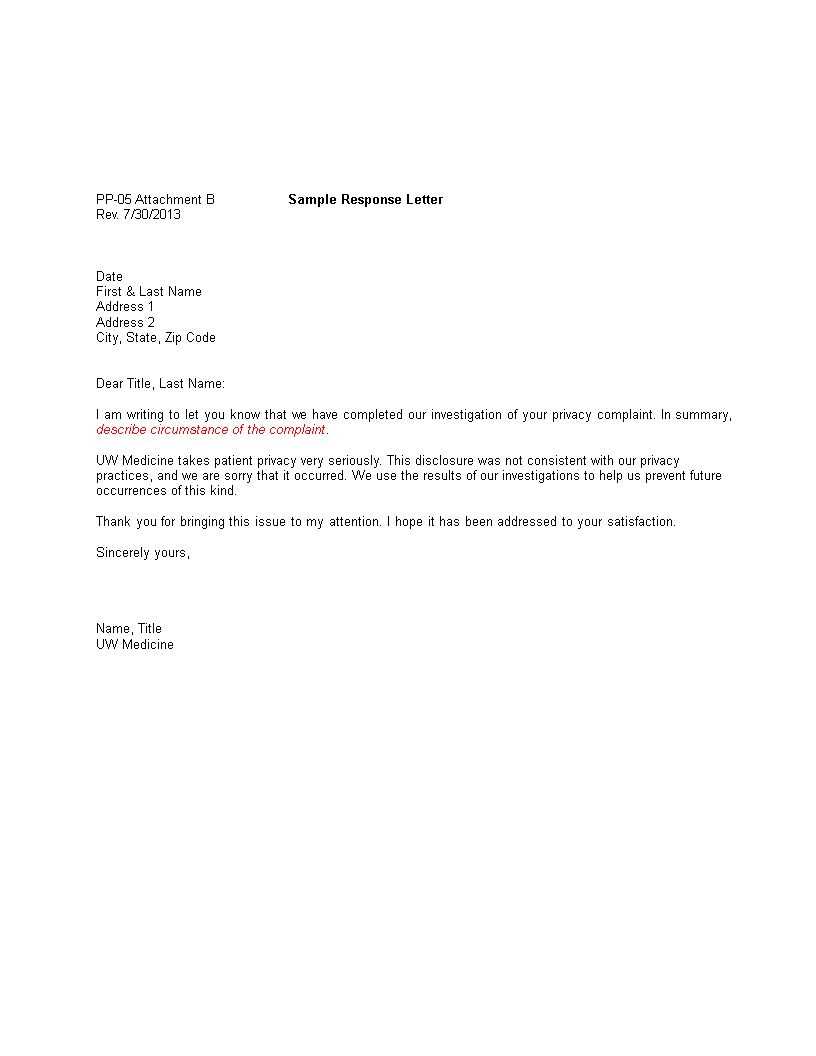
When challenges arise in the workplace, it’s important to address them in a formal and respectful manner. Communicating concerns clearly can help foster a better understanding and lead to a resolution. This section offers guidance on how to express dissatisfaction while maintaining professionalism.
Essential Elements of a Formal Complaint
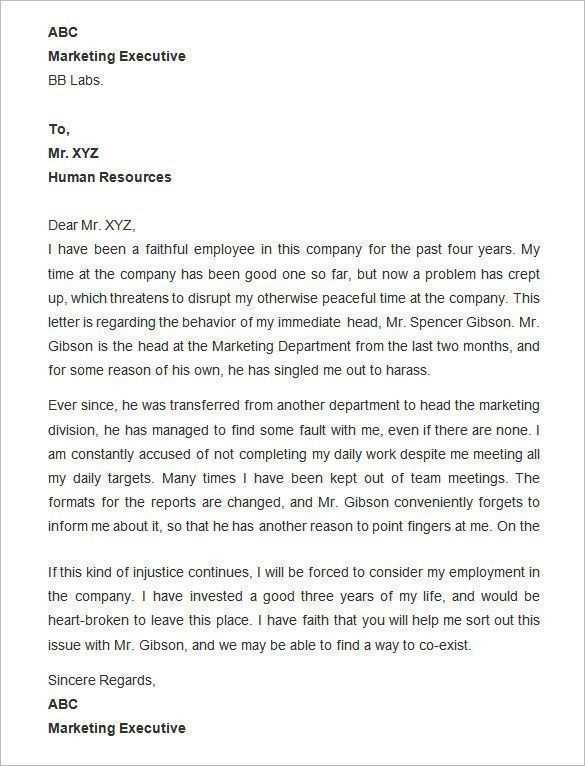
To begin, ensure your communication includes the following key elements:
- Clear Description: Clearly state the issue you’re facing without ambiguity. Detail the events or circumstances that led to your concern.
- Specific Examples: Provide concrete examples to support your claim. This helps to present your concern logically.
- Desired Outcome: Express what you hope to achieve from addressing the situation. This could be a solution or an action to resolve the matter.
- Professional Tone: Maintain a respectful tone throughout your message, regardless of the issue’s nature.
Why Effective Communication Matters
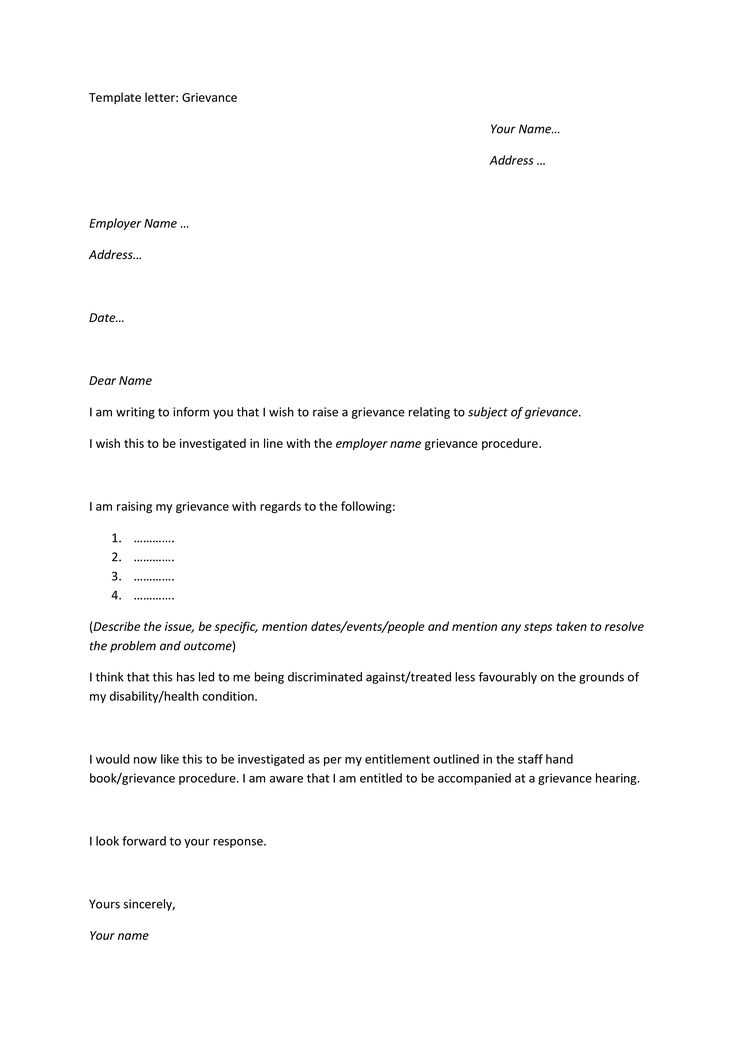
Approaching workplace problems with professionalism and clarity not only improves the chances of resolution but also strengthens your standing within the organization. By framing your issues in a constructive way, you open the door for positive dialogue and outcomes.
How to Avoid Common Mistakes
There are a few common pitfalls to avoid when conveying concerns:
- Emotional Language: Avoid letting frustration influence your words. Keep your communication focused on the issue itself, rather than emotions.
- Vague Descriptions: Ambiguity can hinder understanding. Be as specific as possible to avoid confusion.
- Accusatory Tone: Framing your message in a way that attacks others can make it difficult to have a productive conversation. Focus on solutions, not blame.
When to Take Action
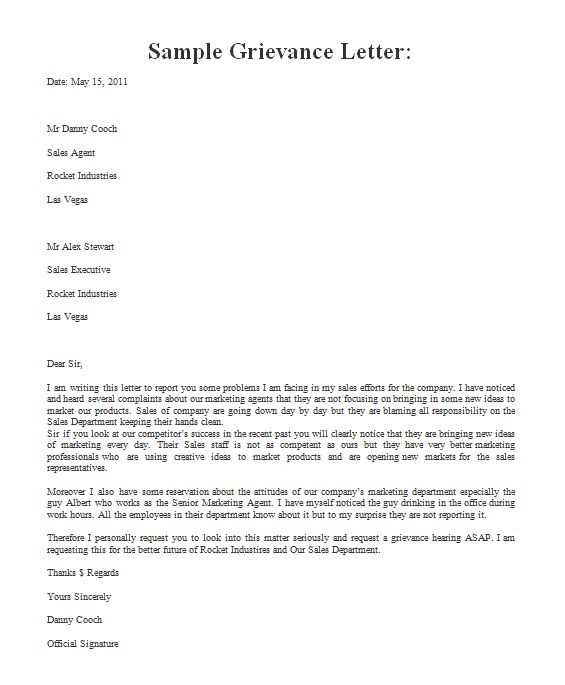
It’s important to know when to raise your concerns. If the issue remains unresolved after addressing it informally or if it involves serious misconduct, it may be time to communicate in writing. This formal approach ensures that your concerns are documented and taken seriously.
Steps to Take Before Writing
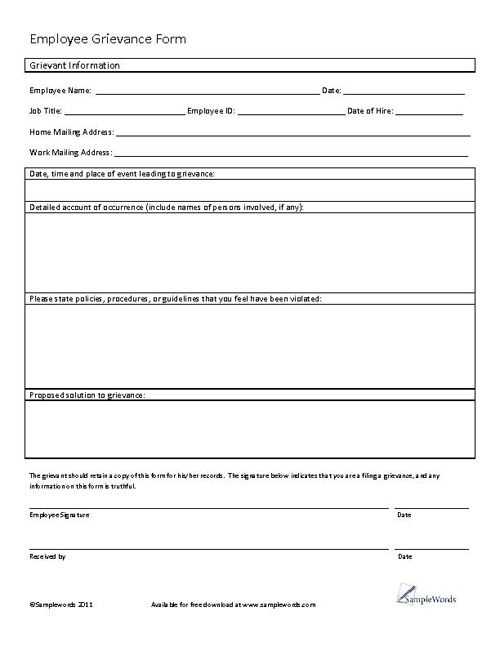
Before you send your message, ensure you’ve considered all aspects of the issue:
- Assess the situation to determine if a formal communication is necessary.
- Reflect on the desired outcome and the best way to achieve it.
- Check company policies to ensure you follow the proper procedure for addressing concerns.
Conclusion
By addressing workplace issues in a thoughtful, well-structured way, you can improve your chances of finding a resolution that benefits both parties. The goal is not only to address the problem but also to maintain a positive, professional working environment.
How to Address Concerns Effectively in the Workplace
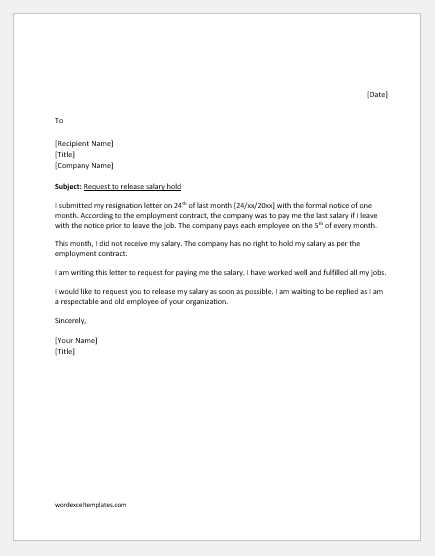
Communicating dissatisfaction or issues in a professional environment requires clarity and structure. Whether you are facing a challenging situation or need to express concerns, it’s important to present your message in a way that encourages resolution. This section will guide you on how to express issues effectively while maintaining professionalism.
Key Elements of Effective Communication
When drafting your communication, it’s crucial to include the following elements:
- Clear Description: Be specific about the problem you are addressing. Clearly describe the situation, providing relevant facts.
- Examples: Offer concrete examples that illustrate your concerns, helping to give context to your message.
- Desired Outcome: State what you hope to achieve. Whether it’s a solution or a change, make your expectations clear.
- Respectful Tone: Keep your tone professional and constructive. This increases the chances of a positive response.
Common Pitfalls to Avoid
There are several mistakes people often make when addressing workplace concerns:
- Overemotional Language: Avoid letting frustration or anger drive your words. Keep the focus on the issue, not personal feelings.
- Lack of Specificity: Being too vague can lead to misunderstandings. Be precise and direct in describing the problem.
- Blame-Shifting: While it’s important to address the issue, be careful not to accuse or attack individuals unnecessarily. Focus on resolving the matter, not on blame.
Knowing when to raise concerns formally is equally important. If informal discussions haven’t worked or the situation is too severe, it may be time to address the matter in writing. By taking the time to draft a clear and respectful message, you ensure that your concerns are taken seriously and considered thoughtfully.